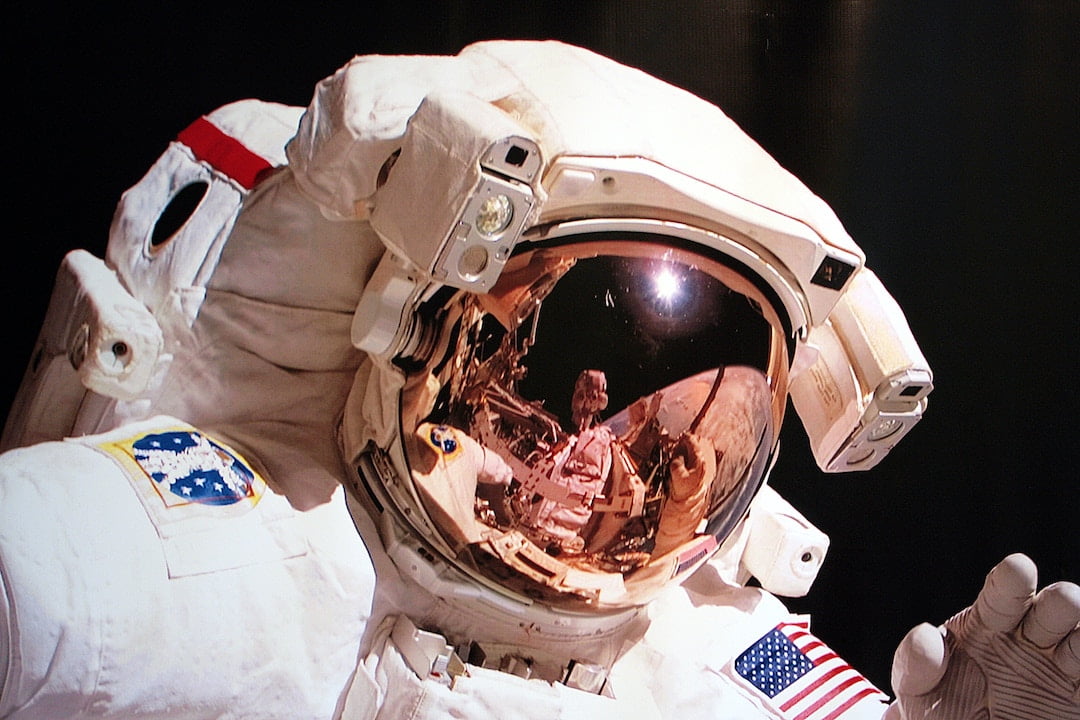The space tourism industry is ready for take-off, and one company is leading the way with their specially-designed space suits built for everyone.
Sydney-based startup Metakosmos knows that space travel for everyday citizens is becoming more and more of a possibility. To keep up with the growing space fever, they intend to produce spacesuit technology that is affordable and accessible for everyone, while also having serious training benefits.
CEO of Metakosmos and electrical engineer Kiriti Rambhatla says “imagination is an important characteristic of the entrepreneur, and fiction is an inspiration to discovery, innovation and invention.”
But what exactly does he plan for this technologically advanced suit? And what does it mean for space travel?

A typical space suit
A study of space
Traditionally, spacesuits have supported astronauts with several essential functions. They supply a steady stream of oxygen, and protect the wearer from floating debris, radiation, and sudden changes in temperature.
A liquid cooling and ventilation garment is worn by astronauts under their suit. This garment continuously pumps water around in order to keep the astronaut cool. Similarly, on the back of the spacesuit is a backpack labeled the Primary Life Support Subsystem. This system completes many vital tasks including removing the carbon dioxide that astronauts exhale, circulating electricity through the suit, and holding the oxygen that they breathe in.
For the most part, the space industry has been managed by the government and defence departments, meaning less thought has been given to consumer ease and accessibility in the design and cost of these suits.
“The Apollo spacesuits cost around $600,000 each [in today’s money],” says Kiriti Rambhatla. “Space Shuttle suits cost about $15 million each. For commercial space tourism, the cheapest seat is expected to be Virgin Glactic’s, at $250,000 for a 90 minute flight.”
With costs so high, it’s hard to imagine the additional price of purchasing safe, reliable spacesuits. And that’s where Metakosmos comes in. Their Kosmosuit is an attempt to make space experiences more readily available by considering the need of everyday consumers in the design. So what does this look like? And how might it work?

A giant leap for mankind
Metakosmos is hoping to produce three different suits: Terra, Aqua and Vyom. Each is a blend of physical design elements and high-tech software which work together to keep the wearer comfortable and safe. This is achieved through several elements, common among the three suit types.
The first is the exo-suit, which has been designed for versatility. It absorbs impact and protects the wearer from injuring themselves, while also controlling temperatures to combat external factors.
The next layer is the sensor suit, which uses biomarker tracking to monitor muscle function, aging, stress and radiation levels. The monitoring is non-invasive and provides specialists with reliable information about the wearer’s physical state.
Finally, Metakosmos’ software allows the suit to analyse biomedical, environmental, cognitive and biochemical data of the individual. When combined, these three layers should provide optimal support for space travelers in a cost-efficient manner.

The Metakosmos spacesuit © Metakosmos
On the horizon
Beyond just space travel, Metakosmos has designed its suits for training purposes as well. The Aqua suit is able to simulate microgravity underwater activity, which can be used in zero-gravity training and research.
For land activities undertaken to test an individual’s capability for space travel, the Terra suit should come in handy. It has been specially designed to teach its occupant how to dress and undress in the bulkier material, how to configure the suit, and perhaps most importantly, how to use the software.
The Vyom suit is the most practical for actual space travel. Once participants have completed their training, it will support them in their journey to space and provide them with all the protection they need.
However, Kiriti Rambhalta has hope that the suit may find uses back on earth too. For example, in dangerous professions such as underwater welding, or volcano research. He believes that the technology employed in the suits has ramifications for the future of world industries, by offering the wearer temperature protection, and biometric monitoring.
When looking into the future, his vision is one of “advancing the philosophy of space technology, enhancing life on Earth, effective management of extreme conditions, and developing microgravity operations capability.”
Metakosmos is still in its early stages, yet it emphasises a continued focus on space tourism across Australia and the world. We may not know what the future holds, but it is exciting to consider the possibilities.
To learn more about Australia’s space industry, click here.

